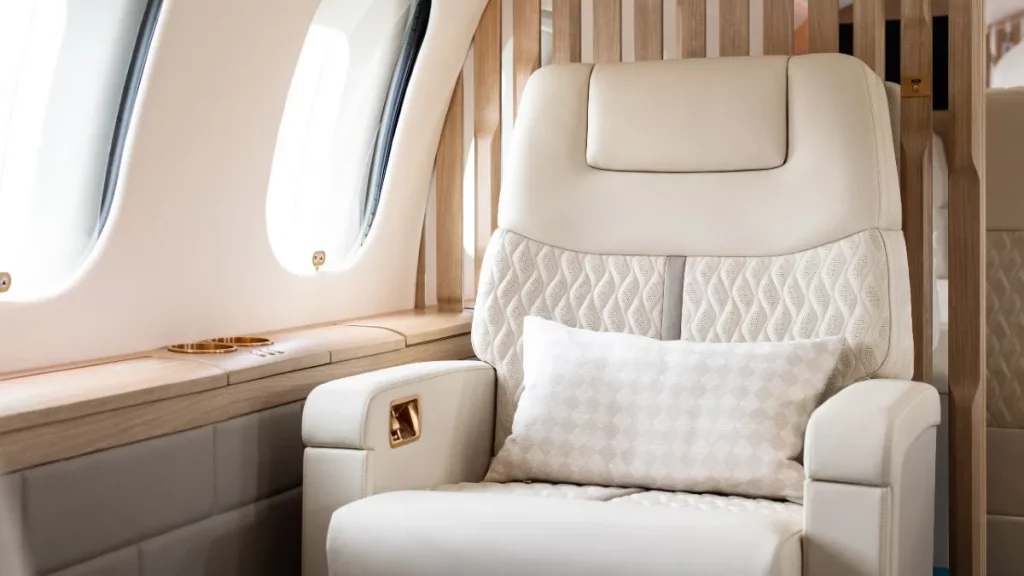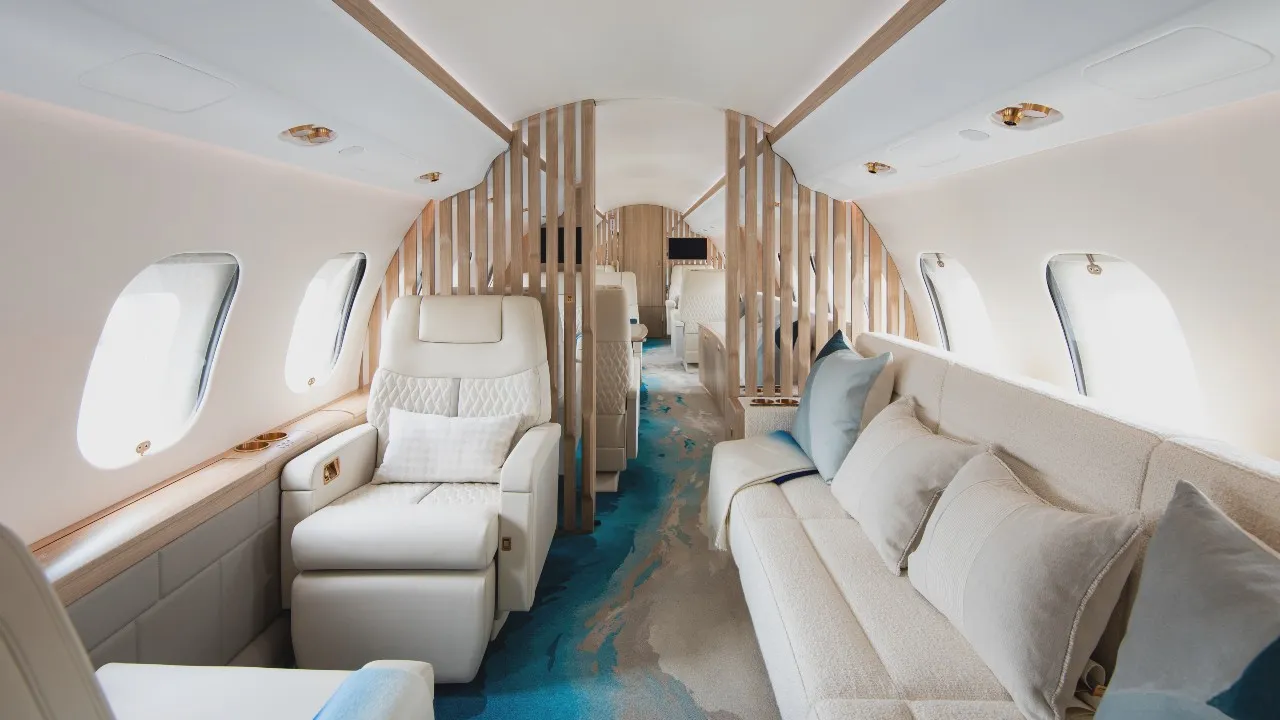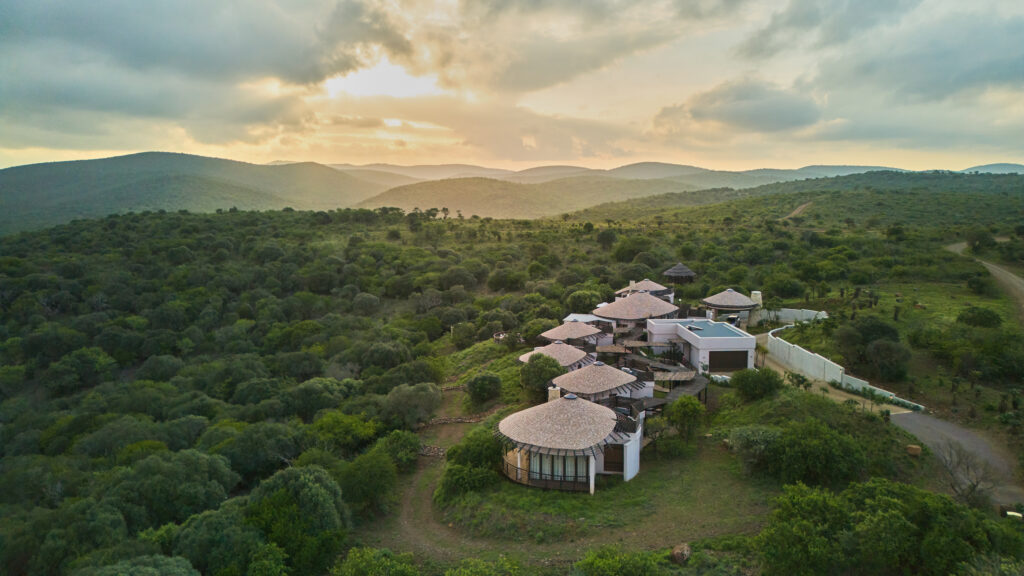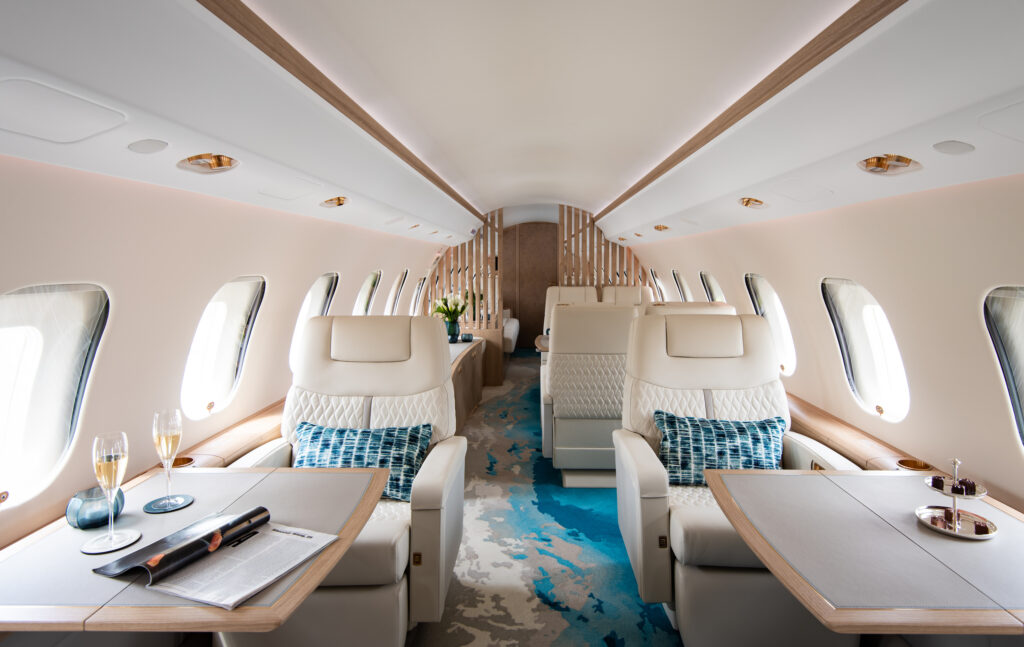The ultra-long-range jet had a drab interior with high-gloss cabinets and tacky gold fixtures. Eight months later, the reimagined cabin is light and modern, with a new emphasis on space.
Winch Design’s recent Bombardier Global 6000 makeover shows how a dated jet can become an overnight sensation. Well, maybe not overnight. The refurbishment of the interior and exterior took eight months, but resulted in a dramatically new look.
Jim Dixon, managing partner and creative director of Yachts & Aviation at Winch Design, oversaw the project. “The original cabin had the standard look of a business jet from 2014, with a high-gloss satinwood veneer, gold fittings and very tired-looking upholstery,” he says. “The white exterior was unremarkable, with just a few swoop lines along the side. There was really nothing unusual about it.”
The jet that emerged now has a dramatic metallic-colored teal fuselage, courtesy of General Atomics in Munich, with streaky white lines on the nose, tail and wingtips that look as if it’s passing through the clouds “This exterior really stands out, especially given the new owner’s business,” says Dixon. Ireland-based AllianceJet will be using the revived aircraft for chartering.

The UK studio presented the client with three concept options, which took several months to prepare. The project was then carried out at the Bombardier facility at London’s Biggins Hill airport. The interior was completely stripped down and those components were sent to F-List in Austria, which remade each component. The new cabin had the same layout and dimensions, but was otherwise unrecognizable. “It had been somewhat dated, with a little bit of a Middle Eastern style, and what came back was a complete visual refresh,” says Dixon.
The cabinetry was “wrapped” in what Dixon calls a “foil imitation” of real wood, a technology that has improved to the point where its looks and tactile qualities resemble authentic wood grain. “The untrained eye couldn’t really tell the difference,” he says. “But it saved quite a bit of time, cost, and weight.”
Every other part was resurfaced with new materials, including the headliner and walls, along with new carpeting and remodeled seating. The aft lounge bulkhead includes a burlwood marquetry design, while the forward and middle bulkheads incorporate 3-D slatted screens of light-colored wood and mirrors to enhance the sense of space.

“We worked on all the architectural details, bringing everything, from the straight-grain walnut timber to the new leather on the seats, to a much more refined level,” says Dixon. “We also redefined the cabin’s sightlines to make emphasise its interior space.” The Global 6000 also received upgrades to its Audio-Visual and Satcom systems.
The aircraft had been scheduled for an extensive C Check following 10,000 hours of operation. The interior has to be stripped of furniture and carpeting so that inspectors could look for structural flaws in the fuselage and bulkheads, while the exterior paint job was removed for the same reasons. “This makes it the opportune time to create a very different aircraft,” says Dixon.
Richard Gaona, executive chairman of the Comlux Group, with headquarters in Switzerland and an interior completions center in Indianapolis, has seen many other older aircraft undergoing similar modifications during C Checks.
“The life of the largest jets can be 70,000 flight hours, so if an owner only flies 10,000 hours in ten years, that aircraft is like a new plane,” says Gaona. “But during that time, technology has changed tremendously. So the C Check is a good time to install a new interior or satellite system. It gives the jet a second life.”






